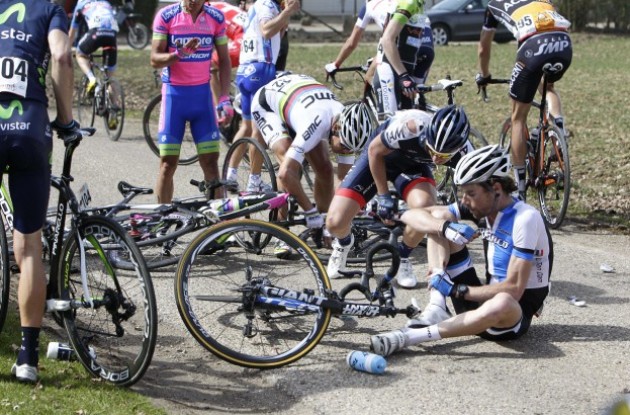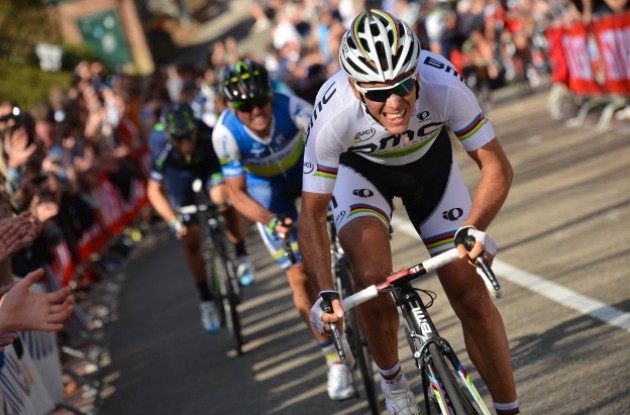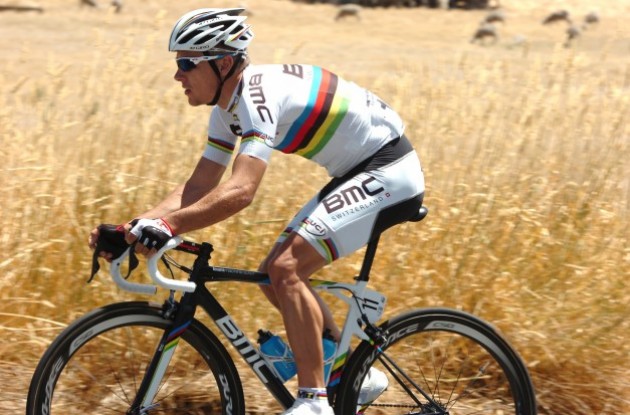Extreme Positioning
I’m watching footage of recent editions of the Tour de France and there are street blocking crashes on roads that are perfectly straight. Yes the roads at sections are narrow and the Tour peloton almost numbers 200 bodies, but still ... crashes. It’s surprising. Often the commentators are left scratching their heads as to the cause of the pile-up. That got me thinking and I started some research.
While there are plenty of stats showing abandonments, I couldn’t find one that showed abandonments due to strictly a crash.
Riders blame the crashes on “nerves” as they are constantly fighting to move to the front of the peloton. I, however, think part of the reason for the crashes is positioning on the bike.
Today’s modern race bikes are Ferraris. In fact bike companies often enlist car manufacturers for design improvements or get inspiration from high performance cars - like Specialized’s Venge from the F1 or BMC’s new Lamborghini model. They are carbon fiber constructed and designed by engineers looking for the slightest edge on the competition’s bike. Today’s bikes are undeniably faster than their predecessors.
Originally, I thought that the head and seat tube angles of today’s bikes versus the bikes of the 1980s were more aggressive. Turns out that’s not the case. In comparing the angles of a 2013 Trek Madone to the angles listed in an old Trek brochure I found online, those two angles really haven’t changed much - depending on size, both bikes are right around 73 degrees.
However, what I did notice was that the wheelbase of the 1984 Trek 660 is longer than the wheelbase of the Trek Madone race bike of today (1984 Trek 660 bike: 99.7cm versus 2013 Trek Madone: 99.3cm). Also the 1984 Trek’s chain stay length is 41.5cm versus the 2013 model’s 40.7cm. The bottom bracket drop on the 2013 Madone is 7.0cm versus the ’84 Trek 660’s 7.2cm - a bit higher.
I compared other major bike brands to the 1984 Trek 660 and found even shorter wheelbases and chain stays.
While the head and seat tube angles haven’t changed, the length of the bike has shortened and the bottom bracket is slightly higher. The result is a modern bike that is quicker handling than previous models.
The evolution of the bike design is because criteriums became more of a staple of racing in the States. The constant cornering that was often less than a mile in distance, necessitated sharp handling bikes.
Take that design change and then compound it with the current popularity of pro riders slamming their 130 to 140mm stems to the top of the head tube. Often riders have custom fabricated stems with an aggressive negative rise that lowers their front profile even more.
Case in point: Philippe Gilbert’s BMC bike. Tech guru James Huang of CyclingNews/ Bike Radar reported the details of Gilbert’s BMC TeamMachine SLR01. James reports that Gilbert is 5’10”. Typically a rider of that stature would ride a 56cm frame. Instead the current world champion throws his leg over a 52cm frame with his 140mm stem slammed to the head tube. And looking at the fore/aft position of Gilbert’s saddle, it looks like he has that slammed back on the rails.
The Belgian might be an extreme example of a “pro-fit,” but I don’t think the bike fits of many pro riders are that far off from Gilbert’s. Look at pro riders’ bikes and the craze is long stems as low as possible. Even locally I see that trend replicated on riders who have no business being that low or stretched out on a bike.
My buddy Dr. Dave Mruz lent me his library of Winning Magazines (Circa 1980s to 90s. The doctor has an extensive collection, which even includes Road Bike Action – the first run before they folded it and then brought it back, as well as Bicycle Guide). The stems are not slammed and extended. Instead there are a couple of inches of the stem’s quill showing and lengths are in the 120mm to 130mm range. Riders have their hands positioned on the tops or hoods when cruising in the peloton. When they’re in the breakaway or off the front they lower their position by grabbing the drops of their handlebars.
In contrast, today I rarely see riders in the drops of their bars for any amount of time. In the break their mitts are still on the hoods, but with their elbows bent at 90° versus 45° when in the bunch. I think it’s because they just can’t get into the drops comfortably for any amount of time. I wonder, if they could get their hands into the drops would their knees hit their chests?
So in other words current pro cyclists have eliminated a hand position on their bikes due to the extreme positioning. Gone is the elevated position of the tops of the bars. Instead today’s pro riders have an extreme or more extreme position.
And before you start by saying these are pro riders and they can do it, I beg to disagree. While there are a few riders that focus on flexibility, I know and have seen many more with the normal flexibility issues that we “normal” riders struggle with - tight hamstrings and weak lower backs. I’m curious to see how these riders are faring once they’ve retired and hit 40. I suspect the chiropractic line of business will see an uptick in ex-pro riders paying them a visit.
While this extreme positioning looks “pro” this has to affect the handling of the bike, thereby resulting in a twitchy machine. Ever ridden a bike that was too small for you and noticed how uneven it felt? Then compound it with a saddle slammed back and long stem. All it takes is a rider to be slightly distracted or maybe reach for something in his jersey pocket. The bike swerves into the rider next to him and suddenly you have a bike yard-sale in the middle of the road.
Undoubtedly we will see large crashes in Grand Tours such as the Giro d’Italia and Tour de France again this year. Some will be caused by the “normal” occurrences – riders trying to push their way through a gap that doesn’t exist, a quick swerve in a field sprint, a water bottle bouncing along the road. However, I think most of these could be avoided with bike fits that are not so extreme and not dictated by the current fad of elongated positioning.
If this sounds like the rant of a master category racer who yells at kids to get off his yard – well it is.
Gear up for the new cycling season in Roadcycling.com's road bike shop and follow Roadcycling.com on Twitter, Facebook and Google+.
Recently read articles
I think one contributing factor may be the bubble wrap society kids have grown up in the last few decades. Most of us in our 50s age category did our early races in skid lids and knew we were lunch meat if we went down the wrong way. The preponderance of bad crashes seemed to happen once hard helmets were mandatory. Like in ice hockey before there were mandatory helmet rules players played with a level of respect to the fact they were all unprotected. Somehow it felt more safe riding sans brain bucket on a hot day doing a fast cat 1/2 crit in 1978 than doing a masters race today even though we are seasoned vets. The "new guys" who came up in the 90s seem to cause all the crashes with risky moves not respecting the apex and not holding their line. Maybe its a combination, we did our race training with men who never doffed a lid and maybe we are simply better because of it.











